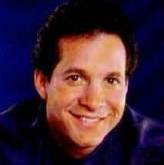John L. Lloyd ‘Sully’ Sullivan: I want this picture to be a commentary on modern conditions. Stark realism. The problems that confront the average man!
Mr. Lebrand: But with a little sex.
John L. Lloyd ‘Sully’ Sullivan : A little, but I don't want to stress it. I want this picture to be a document. I want to hold a mirror up to life. I want this to be a picture of dignity! A true canvas of the suffering of humanity!
Mr. Lebrand: But with a little sex.
John L. Lloyd ‘Sully’ Sullivan: With a little sex in it.
Joel McCrea and Robert Warwick, SULLIVAN’S TRAVELS
On their celluloid surfaces, Larry Charles’ BRüNO (2009) and Preston Sturges’ SULLIVAN’S TRAVELS (1941) seem like drastically different entertainments, but in fact, with over 60 years of cinematic age between them, the films couldn’t be more similar. SULLIVAN’S TRAVELS is truly one of the great films generated from Hollywood (a bygone, classical Hollywood that was the mecca of diversionary amusement where the major studios crafted films strategically, efficiently and creatively) by master helmsman, Preston Sturges; social satire and intelligent farce par excellence and as American as the Walt Disney comedy reel and plate of ham and eggs that are served up. BRüNO is a flashy, outrageous and wickedly humorous cosmopolitan spectacle where the line between fact and fiction (and dignity and obscenity) is blurred; a free-form mockumentary whose purpose is not so much to satirize, but to shock, degrade and catch the film’s subjects (and the audience) off guard. And whereas Joel McCrea’s Sullivan is a wealthy American film director searching for the essence of poverty that possesses and troubles the common man as he prepares for his new project, “O Brother, Where Art Thou?”, on the other end of the spectrum, Sacha Baron Cohen’s Brüno, is a freshly unemployed and near-broke, flamboyantly gay, Austrian fashionista in the pursuit of celebrity and fame who will achieve it at any cost - - dignity notwithstanding. At the core of these two disparate Odysseys is a man searching for the fiber (or 'fabric') of his humanity while unwittingly putting America under a microscope - - while also having “a little sex in it”.
Whether Brüno’s prey and the sequences in which they’re exhibited are staged or not, Cohen’s incomparable wit and knack for improvisational comedy shines as he skewers a Republican Congressman (while attempting to make a sex-tape which he thinks will earn him renown); a TV show host (when he discovers that philanthropy may lead to fame); a wanted terrorist (believing that being kidnapped will bring undoubted notoriety) and several Middle Eastern diplomats (because instant success must be achieved after bringing together parties that have been feuding for decades) with the arsenal of his microphone and camera. Although these scenes (filmed non-linearly, often several months apart) may seem like an unusual mash-up of interviews on the part of a seemingly submissive host that is Brüno, when merged together, they appear as if they are cleverly compartmentalized trips to different points in the globe that satisfies Brüno’s wanderlust.
And what a globe it is - - a further enhancement to the film is the occasional cutaway to a map of the world composed of fashionable fabrics and textiles (e.g. a denim North America) and jewel-like ornaments that track Brüno’s trek from Austria (where he’s ousted after a blunder involving an all-Velcro outfit on a runway) to Los Angeles to the Middle East to Africa (where he adopts his “African American” son “from Africa”, O.J., whom he "swapped" for a limited-edition iPod). This is literally Brüno’s universe that he encircles, further punctuated by his command over each interview in each new locale that he visits. The only instances when he’s truly submissive are when he attempts to engage in same-sex coupling. Not only does this likely take an offensive turn (for the filmed subject and/or the audience spectator), it also destroys the line of truly objective non-fiction, documentary filmmaking (much like in Belvaux, Bonzel and Poelvoorde’s stunner, MAN BITES DOG, about filmmakers who document a serial killer’s daily grind and soon join in on his crimes).
Brüno is a stinging hybrid of narrative mockumentary and slapstick comedy and as irrepressible and stereotypical Cohen’s personification of Brüno as a homosexual male may be, it is often his subjects ensnared in his (often hidden) cameras who make us laugh or bite the insides of our cheeks to keep from laughing (e.g. when a stage mother agrees to have her toddler engage in liposuction for a part in Brüno’s photo shoot and to also have her child dressed in Nazi fatigues while pushing a wheelbarrow containing a Jewish baby into an oven).
Whereas the sex in SULLIVAN’S TRAVELS is tame (i.e. practically non-existent) except for its often-times provocative innuendo; for instance, two sisters (the Kornheisers) who take Sully into their home offer this exchange:
Miz Zeffie: He seems very strong. Did you notice his torso?
Ursula: I noticed that you noticed it.
Miz Zeffie: Don't be vindictive, dear. Some people are just naturally more sensitive to some things in life than some people. Some are blind to beauty, while others... Even as a little girl you were more the acid type, dear, while I, if you remember...
Ursula: I remember better than you do.
Miz Zeffie: Well forget it. And furthermore I have never done anything that I was ashamed of, Ursula.
Ursula: Neither have I.
Miz Zeffie: Yes, dear, but nobody ever asked you to.
the sex in BRüNO is (literally) ‘balls out’ and graphically ‘in your face’. Brüno is anything but restrained. Similar to the garish outfits he wears - - clothes really do make the man, apparently - - Brüno’s high-pitched dialogue, excessively over-the-top Austrian accent and intermittent body gyrations always make him the focal point. Quite possibly the film’s strongest and most subversive image is the tip of a man’s penis ‘mouthing’ “Brüno”. Cohen is shameless in his portrayal of Brüno and morality on the part of the audience is checked at the door. Aside from body movements in a theatrical setting, if cinema-going is preferably a thinking man’s sport, then by submitting to the images on screen and the sounds emitted from the speaker system, one is engaging in a type of visual and aural interactivity. To remove oneself from the seat and leave the theatre would prove one’s dominance over the imagery being displayed before them - - but why miss out on the fun. If Brüno is stereotyping the modern-day homosexual, there was even a small racial undercurrent in SULLIVAN’S TRAVELS when during the (classic!) uproariously funny RV chase, not only is a white policeman covered in mud giving him a skillfully composed ‘blackface’, but an African American chef’s face is almost simultaneously dowsed in white pancake batter.
While there is no Veronica Lake to speak of in BRüNO, there is the blond escort Lutz, Brüno’s “Assistant’s Assistant” who accompanies him on his journey to celebrity. And although he’s not as forthcoming in his sexual acts (and use of props) as Brüno’s pygmy ex-lover, Diesel, he nevertheless worships the ground that Brüno struts on. Brüno doesn’t realize that it will actually be Lutz who is responsible for his newfound celebrity and ultimate happiness when he arouses Brüno during a type of white trash, televised gay bashing that reeks of Wrestle-mania. As Brüno succumbs to Lutz’s advances and both proceed to strip and open-mouth kiss in front of a pack of offended (straight) spectators, the cameras are rolling (as usual) and Brüno’s fame is secured.
Thankfully, both SULLIVAN’S TRAVELS and BRüNO end on a light night ~ with the films' respective characters laughing joyously with no sign of conflict and in good cheer. Are Charles and Sturges onto something here: that comedy will cure the world’s ills? Cohen’s naiveté, his character’s scandalous behavior and Brüno’s struggle to succeed only enhances the film’s light-heartedness. If it were a serious performance sans the ‘Gay minstrel’ and not one laugh could be procured by the filmmaker(s), G-d help us all, as that would be no laughing matter.







